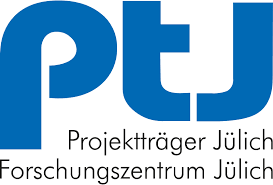Two apartment blocks are located on the outskirts of Cottbus (Germany). Solar thermal energy on the roof and photovoltaics on the outer walls supply the houses with heat and electricity. Heat and electricity can also be stored temporarily in a storage unit and a battery. Everything is all-inclusive for the tenants: they pay an all-inclusive rent, i.e. a fixed monthly price is charged for the electricity and heat generated from renewable sources in addition to the basic rent. A recently completed research project at TU Freiberg investigated whether this model pays off for tenants as well as for housing companies.
Over the past five years, the team has analysed the data on energy generation and consumption in the solar houses. The researchers also analysed how the rental model with the energy flat rate affects people's energy consumption and living behaviour. "The flat-rate rent also works in the solar apartment building: there was no wasteful behaviour on the part of the residents during the research project, meaning that energy consumption was largely covered by solar energy. Between 70 and 77 per cent of the electricity and 50 to 55 per cent of the heating requirements were covered by solar energy," says Dr Thomas Storch, who supervised the project on behalf of TU Bergakademie Freiberg.
Despite higher investment and construction costs for the technology required in the solar house, the calculation not only works out for the tenants, but also for the housing cooperative eG Wohnen 1902 involved in the project: "By using surpluses in the neighbourhood, there are no energy costs there. In addition, the flat-rate rent ensures a higher return on equity than standard rental models under the given conditions."
Adaptation to other locations
"We have found smaller optimisation options," says project manager Lukas Oppelt. According to the researchers, this includes the battery heat storage system, for example, which could be planned on a smaller scale for similar projects. Another conclusion of the team: "Our simulations of weather data show that the solar yields for apartment buildings are also profitable for both construction companies and tenants in Hamburg or Munich." The team is currently investigating how the model can be transferred to international projects in the "Solar Energy Buildings" programme of the International Energy Agency (IEA SHC Task 66).
Supplying surplus energy to the surrounding buildings
In addition to the new rental model, the researchers are also investigating how entire neighbourhoods can benefit from the semi-autonomous apartment buildings. Surplus electricity is consumed in an office building in the neighbourhood, while surpluses from solar thermal energy are used to generate hot water in surrounding existing buildings. Future projects will investigate how the results and experiences from Cottbus can be transferred to existing buildings.
About the Eversol research project
Both houses use solar thermal systems on the roof, which also work efficiently in winter. On days with little sunshine, a gas condensing boiler provides heat. Surplus heat can be fed into the neighbourhood grid. Power is supplied by photovoltaic systems with storage options in a lithium-ion battery or delivered to the neighbourhood.
The research project was funded by the Federal Ministry for Economic Affairs and Energy over five years (2018 to 2023) and led by the Jülich Research Centre. Other partners included eG Wohnen 1902, the Freiberg Institute for Networked Energy Self-Sufficiency, mensura Immobilienservice GmbH, VSWG - Verband sächsischer Wohnungsgenossenschaften e.V. and GdW - Bundesverband deutscher Wohnungs- und Immobilienunternehmen e.V.

